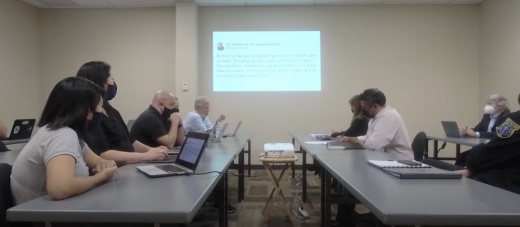The Austin EMS Association laid out its case for substantially increasing the pay for emergency medics during its third meeting with the city.
The meetings kicked off Nov. 30 and are the first in a series the city will undergo to negotiate contracts with all three of its emergency service branches—the EMS, police and fire departments.
The association is asking the city to increase starting pay for the department to $27, a roughly 42% increase from the current starting pay of just over $19.
Selena Xie, the president of the Austin EMS Association, said it is important the city addresses wages and benefits for EMS personnel because the department is struggling to keep up with Austin’s growing population.
She said the department has about 120 vacancies, which has been steadily increasing since at least 2018, when the department had 43.
“We need to make sure we have the staff available to do the job we need to do. Wages and benefits is one of the ways we can make this true,” Xie said.
She said the association is receiving fewer applicants, and fewer individuals are participating in the cadet classes.
At the same time, she said more people are leaving the organization than are joining it. At least 8% of medics surveyed by the department said they plan to leave within the year. At least 20% plan to leave within the next three years, according to Xie’s presentation.
Xie said there are three main reasons for this: increasing cost of living and the availability of other, higher paying jobs; more dangerous and stressful working conditions brought on during the pandemic; and concerns raised following February’s deadly winter storm that emergency weather situations would happen with increasing frequency and the city is not prepared to handle them.
To her first point, Xie said that the influx of tech companies to the area is driving housing prices up, and other jobs, ranging from Amazon to Capital Metro, are offering higher wages to compete for employees.
She said that based on the current salary, Austin-Travis County medics are considered low-income earners, those making less than 50% of the median family income, until seven years into their time with the department. That time is extended if the medics have children, which increases the amount of money needed to reach the median family income.
She said medics are required to be able to get to any medic station throughout the city in less than two hours when on duty, but housing prices are pushing medics further out. Xie and some of the medics present said they live in areas including Kileen, New Braunfels and east Bastrop county.
Xie’s second point highlighted how work has changed for medics during the pandemic. While she acknowledged that the changes are not unique to Austin, she said wages, which are set to increase in 2021 by 1% at the starting pay, have not kept pace with the growing stress.
Lastly, she pointed to the winter storm in 2021. She said that while it could be considered an isolated incident, she and others with the department believe that climate change-related emergencies are going to keep happening. She said the conditions medics faced during the storm, such as being instructed to drive in dangerous situations and not having access to meals or bathrooms, worry many about the toll future emergencies could have.
“We very much appreciate what you do normally. We appreciate the work you do during the pandemic. We appreciate the work you do during the storm,” said Deven Desai, chief labor relations officer for the city of Austin.
The two sides did not discuss the starting wage proposal or any other details on wage or benefits negotiations. Talks will resume in the new year.
“These are important issues, and the city looks forward to exploring them with the union at the negotiating table over the coming weeks," a city spokesperson said.





